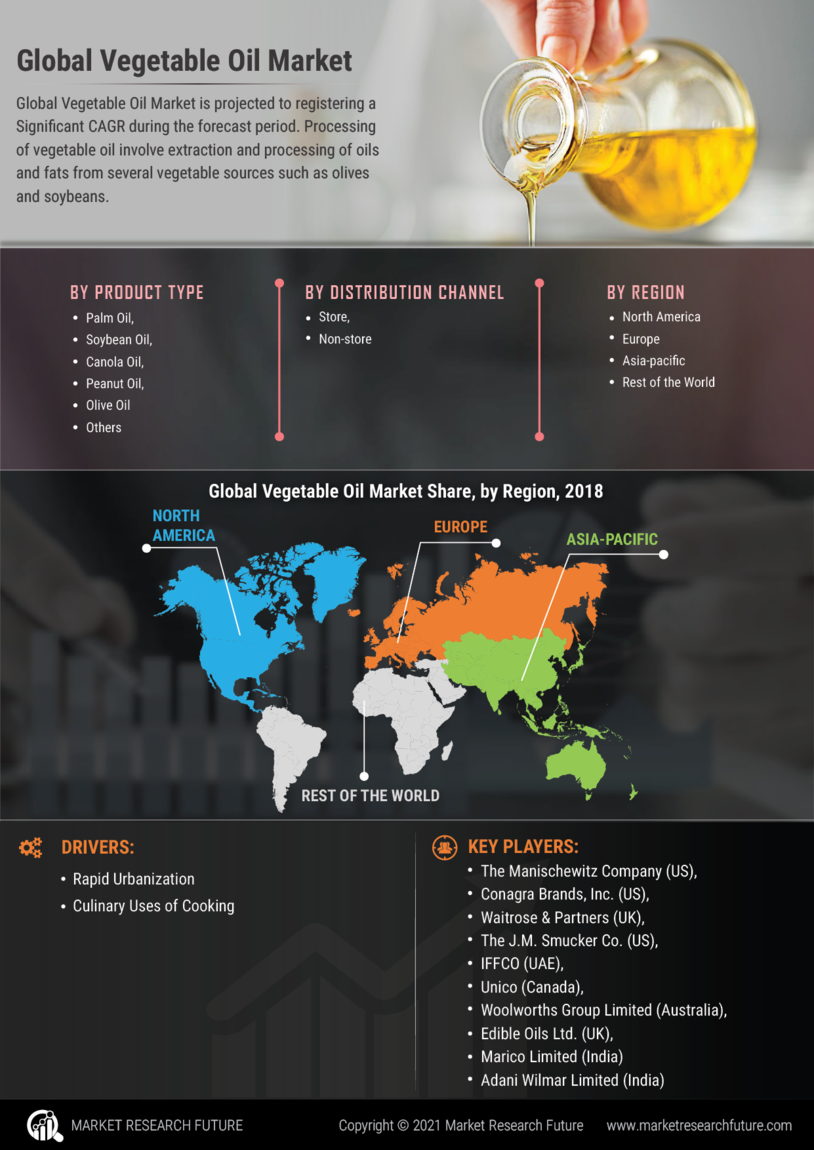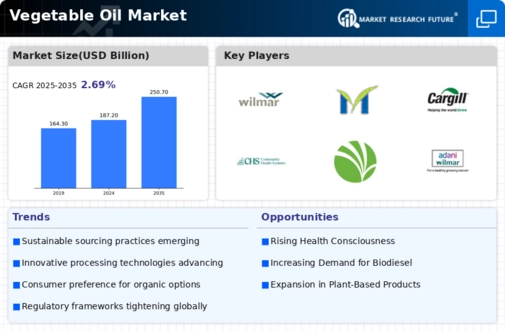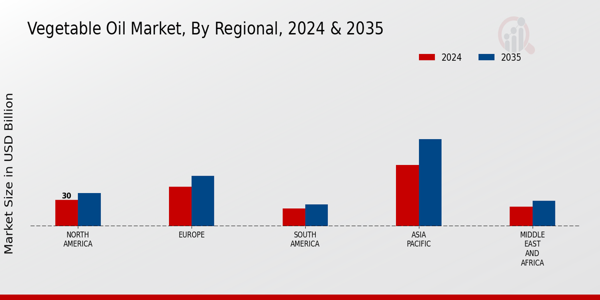Growing Demand for Biofuels
The rising demand for biofuels is emerging as a key driver for the Global Vegetable Oil Market Industry. As countries strive to reduce their carbon emissions and dependence on fossil fuels, vegetable oils are increasingly being utilized as feedstock for biodiesel production. This trend is particularly evident in regions with stringent renewable energy policies. For instance, the European Union has set ambitious targets for biofuel usage, which may bolster the demand for vegetable oils. Consequently, this shift could significantly impact market dynamics, contributing to the anticipated growth from 187.2 USD Billion in 2024 to 250.7 USD Billion by 2035, with a CAGR of 2.69% projected for the next decade.
Rising Health Consciousness
The increasing awareness of health and wellness among consumers appears to be a significant driver for the Global Vegetable Oil Market Industry. As individuals seek healthier dietary options, the demand for oils perceived as beneficial, such as olive and canola oil, is likely to rise. This trend is reflected in the projected market value of 187.2 USD Billion in 2024, with expectations of reaching 250.7 USD Billion by 2035. The shift towards plant-based diets and the preference for oils with lower saturated fats may further enhance this growth, suggesting a potential CAGR of 2.69% from 2025 to 2035.
Market Trends and Projections
The Global Vegetable Oil Market Industry is poised for growth, with projections indicating a market value of 187.2 USD Billion in 2024 and an anticipated increase to 250.7 USD Billion by 2035. The compound annual growth rate (CAGR) for the period from 2025 to 2035 is estimated at 2.69%. This growth trajectory reflects various factors, including rising health consciousness, sustainability trends, technological advancements, and diverse applications across industries. The interplay of these elements suggests a dynamic market landscape, where adaptability and innovation will be crucial for stakeholders.
Sustainable Production Practices
Sustainability in agricultural practices is gaining traction, influencing the Global Vegetable Oil Market Industry. Consumers increasingly prefer products that are produced through environmentally friendly methods. This shift is prompting producers to adopt sustainable practices, such as responsible sourcing and reduced carbon footprints. For instance, the certification of palm oil as sustainable has gained momentum, addressing environmental concerns. As the market evolves, the emphasis on sustainability may drive growth, potentially contributing to the projected market value increase from 187.2 USD Billion in 2024 to 250.7 USD Billion by 2035, with a CAGR of 2.69% anticipated for the following decade.
Diverse Applications Across Industries
The versatility of vegetable oils across various industries is a notable driver for the Global Vegetable Oil Market Industry. Beyond culinary uses, vegetable oils find applications in sectors such as cosmetics, pharmaceuticals, and bio-lubricants. For instance, the cosmetic industry increasingly incorporates oils like argan and jojoba for their moisturizing properties. This diversification of applications is likely to sustain demand, as industries seek natural and sustainable ingredients. As a result, the market is projected to grow from 187.2 USD Billion in 2024 to 250.7 USD Billion by 2035, suggesting a CAGR of 2.69% for the period from 2025 to 2035.
Technological Advancements in Extraction
Innovations in extraction technologies are transforming the Global Vegetable Oil Market Industry. Techniques such as cold pressing and supercritical fluid extraction are enhancing oil yield and quality. These advancements not only improve efficiency but also cater to the growing demand for high-quality oils. For example, the adoption of enzymatic extraction methods is gaining popularity, as it preserves the nutritional value of oils. As these technologies become more widespread, they may contribute to the market's growth trajectory, aligning with the projected increase in market value from 187.2 USD Billion in 2024 to 250.7 USD Billion by 2035, indicating a potential CAGR of 2.69% from 2025 to 2035.









